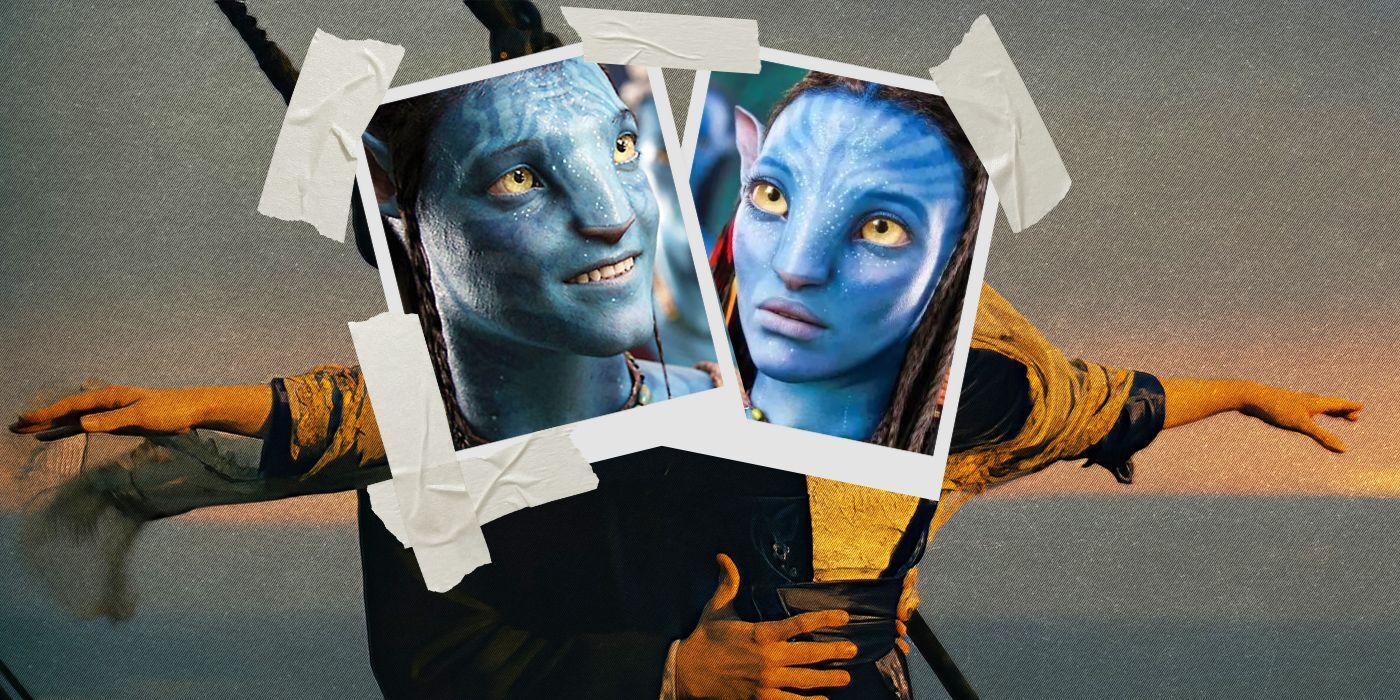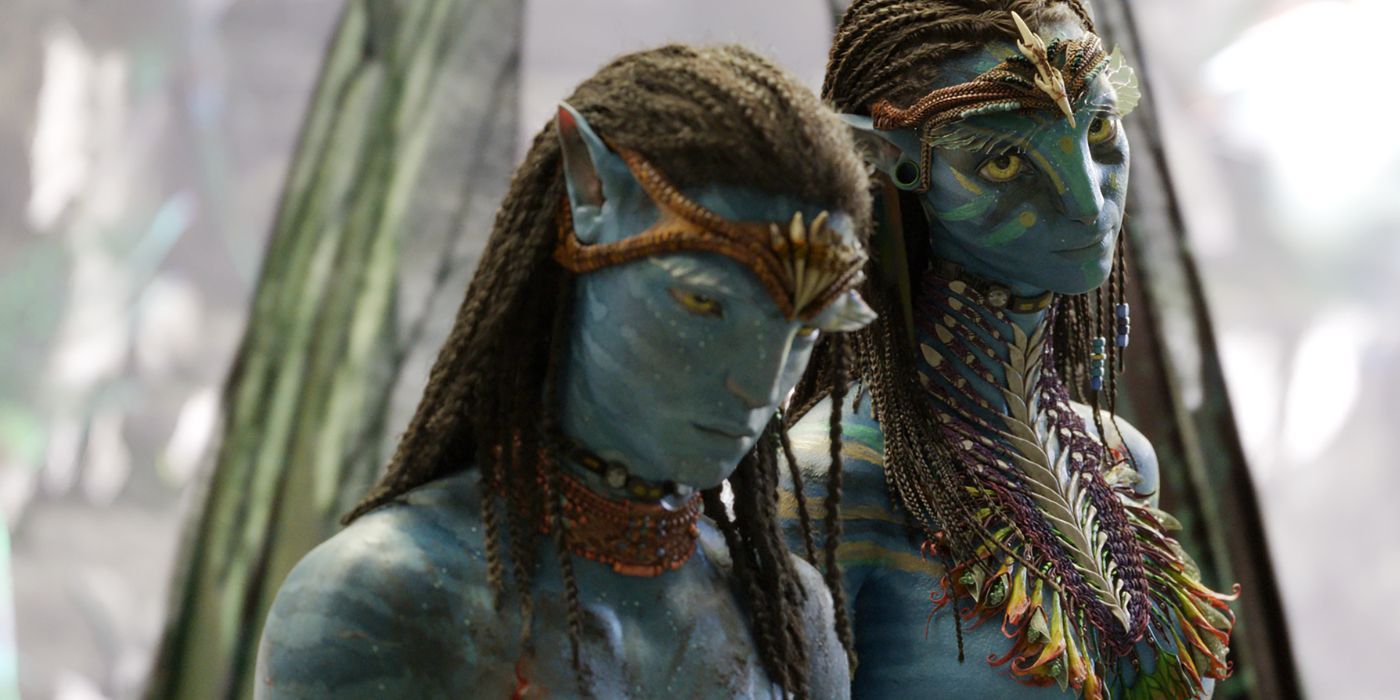Editor's Note: The following contains spoilers for Avatar: The Way of Water
A growing issue that most modern blockbusters face in their third acts is a lack of actual stakes; when you know characters are coming back for a sequel or this is just the next chapter in an extended universe, it’s harder to be invested. There’s a disappointing familiarity to seeing two CGI armies face off against each other in a plain environment. Despite wondrous achievements in visual effects, the impact of seeing these characters brought to life isn’t as impressive if it’s reiterated in every summer movie. James Cameron essentially created our modern conception of what a summer movie looks like with Aliens and Terminator 2: Judgment Day, but ironically, the third act of Avatar: The Way of Water has more in common with his Best Picture winner Titanic.
Avatar: The Way of Water may be an ambitious visual leap forward in the history of cinema, but Cameron doesn’t end his gigantic epic with an empty spectacle. The stakes are entirely personal; Jake Sully (Sam Worthington) and Neytri (Zoe Saldaña) are heartbroken upon the death of their son, Neteyam (Jamie Flatters), and desperate to save their children Lo'ak (Britain Dalton), Tuk (Trinity Jo-Li Bliss), and Kiri (Sigourney Weaver) from the resurrected essence of Colonel Miles Quaritch (Stephen Lang), who now has a Na’vi Avatar body that rivals Jake’s physicality. Quaritch’s position forces his son, Spider (Jake Champion), to make a difficult decision; is he willing to sacrifice his biological father to save the family that raised him?
The questions that most third acts in blockbusters raised are usually regarding how a blue sky beam can be stopped, what weapon is necessary for a “final push,” and what MacGuffin needs to be brought forward. However, the questions in The Way of Water are entirely ethical; does fighting for something make it valuable, is vengeance ever justified, and do children have the opportunity to choose a different path than the ones that their parents have led? These are fascinating moral dilemmas that complicate a sequence that is already utilizing incredible underwater visual techniques. As Cameron proved back in 1997 with Titanic, there’s nothing wrong with a little bit of melodrama.
Legitimate Stakes and Emotion
Titanic is a classic weepie; while viewers knew going in that the ship was going to sink, it was unclear whether the central two lovers would be able to make it out in time. That tension is particularly strong in The Way of Water when a major character is killed at the beginning of the third act. It’s rare to see parents grieving over a lost child in such intimate detail. It truly does feel like any character could die, as their chances of survival are sinking as fast as the Titanic.
Titanic is as much about outsiders as The Way of Water is; Jack and Rose defy traditions with their relationship, as romantic bonds between those of different social classes were frowned upon. We see a similar defiance in The Way of Water through the relationship between Lo'ak and Reya (Bailey Bass), which plays an important role in the third act. They may be from different clans, but their love ultimately endures to keep them alive.
One of the issues raised in Titanic is a very basic one: when a crisis like this is going on, how do you choose which lives to share? Since Jake has been resisting the idea of fighting for the entire story, it’s satisfying to see him finally stand up for his family and defend their honor and safety. Similarly, we know that Neytiri has been heartbroken about leaving her home and furious that she can not defend it. Saddled with the death of a child, she shows the same strength that Rose does as she carries on after Jack's death.
Similar to Titanic, there’s also a creativity to the way that characters are caught within the wreckage of the vessel. While Jake has been on these types of ships before, he’s never had to evacuate one that’s on the verge of breakdown. The mission doesn't become to defeat an enemy, but to swim out of the wreckage and make it to shore. Jake and Neytiri may prepare to sacrifice their lives like Jack does in Titanic, but their children are ultimately able to learn "the way of water" and bring them to safety.
Technological Leaps Forward
As any fan of Cameron’s likely knows, he’s a bit of an underwater expert, and has done some incredible research and political activism to protect our planet’s natural environments. While the final act of Titanic certainly proved that he could capture the beauty and danger of the oceans in glimmering detail with visual effects, he’s created several groundbreaking IMAX documentaries that use next-level projection to capture underwater footage in 3D. Titanic has a reverence for the natural world; the creations of men are useless against the instruments of nature. Similar to the destruction of modern technology at the hands of the iceburg in Titanic, the final act of The Way of Water shows the Na'vi victorious over the RDA because they have harnessed Pandora's ecosystem.
As much as detractors would try to claim that the final act of Titanic is emotionally manipulative or that there are controversies in separating the characters, it’s undeniably a sequence that drew in audiences and turned the film into a “once in a generation” cultural event. That quality is present throughout The Way of Water, proving that a three-hour runtime is justified if it truly goes out on a high note. Although the anticipation is high for what might lie in store for the future of these characters in Avatar 3, the experience of The Way of Water’s third act more than justifies the arduous 13-year wait. It’s a scene that will undoubtedly draw audiences back in again and again, because like Titanic, it’s something we’ve never seen before.




